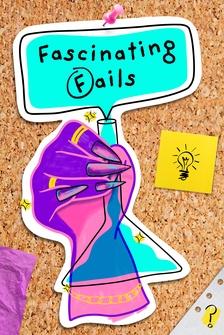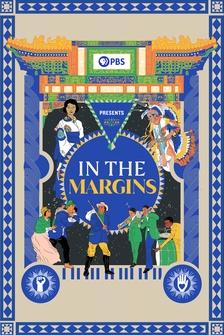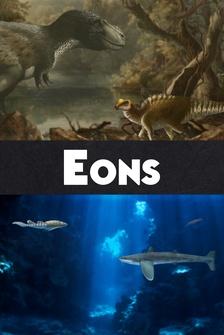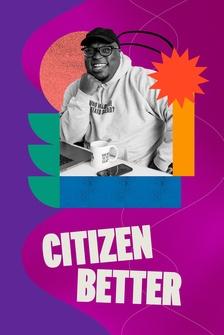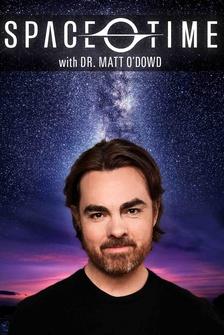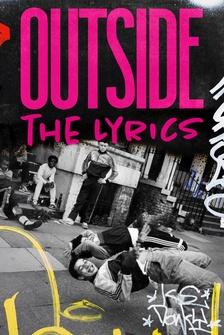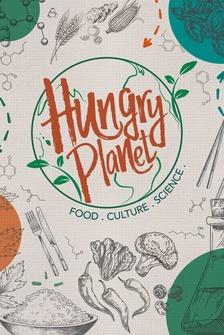Let’s face it: we all have news cycle fatigue.
If it’s not struggling to find reliable sources online, then it’s figuring out how to sift through the myriad of competing (and sometimes conflicting) headlines that roll across our TV screens, cell phones and social media accounts.
But when did the news, in all of these varied and sundry forms, become integral to our lives?
And why do we even follow it?
Survival?
Desire to help and empathize?
Staying informed?
Entertainment?
Our answers will vary from story to story, but one thing is certain.
We live in a culture in which the news has become almost impossible to ignore.
Today I’m giving you guys the inside scoop the history of the news.
We will talk about when and how letting the public know what has been happening domestically and globally became an international phenomenon.
In his book, Mitchell Stephens defines news as “new information about a subject of some public interest that is shared with some portion of the public.” Stephens also provides a useful chronology of how the news came to be.
Since humans have existed, they have wanted to share their news.
We might imagine cavemen grunting and signaling furiously to warn of an imminent attack, smoke-signals, or stories of Greek messengers running to tell about military victories, speakers ascending to the platform at the Roman forum to present political edicts, and West African griots who shared news and oral traditions within their own communities.
Eventually, oral reports evolved into written ones.
Julius Caesar ordered the daily records of Senate proceedings (or acta) to be posted in public.
Some upper class Romans even got their own hand-written copies to read at home.
However, it was the Chinese Han dynasty, and not the Romans, who according to legend invented paper in 105 CE.
By the time of the T’ang dynasty (which began in 618 CE), tipao or official newsletters, were distributed widely among the elites.
With the invention of block printing, it became possible to quickly create multiple copies of these tipaos.
At the start of the 11th century, a Chinese artisan named Pi Sheng even developed a way to use moveable type to make prints.
However, this invention wasn’t terribly practical for a language that relied on so many discrete characters.
That said, the idea did not go away.
In the 13th century, the Koreans made the first moveable type blocks out of metal.
Around 1439, the German goldsmith, Johann Gutenberg, developed his own version of a movable type-based press system.
By 1450, his letter press made it possible to mass produce books, pamphlets and other materials.
Gutenberg’s invention ushered in a new era of mass communication and helped expand literacy throughout the Continent.
Common people no longer depended on a town crier or a single page posted in town to learn what was going on locally.
They also were able to find out about events in other parts of the world.
Access to news had skyrocketed.
But of course, the circulation of new ideas often threatens those in power.
And new modes of communication lead to new kinds of censorship.
In Renaissance Spain, King Ferdinand and Queen Isabella required all printed materials to be licensed and approved in advance by government or church authorities.
And in the 16th century, the English monarchy also regulated printed works to be licensed.
In France, from the mid-16th century though the French revolution, circulating defamatory pamphlets could be punishable by death.
Despite these laws, the appetite for news remained strong.
But so did the desire to make a profit from publishing it.
This brings us to the birth of the newspaper.
Stephens explains that most scholars agree that newspapers must: First, be available to a sizeable portion of the public.
Second, be published regularly and frequently.
Third, contain multiple stories in each issue.
And fourth, have a consistent and recognizable title or format.
The Venetian gazette was a precursor to the modern newspaper.
During the 16th century, Venice was an important center of commerce and a place in which information was exchanged between Europe and the Ottoman empire.
Since a sheet of hand-written news sold for a gazeta (a Venetian coin of little value), these papers became known as a gazeta de la novità—a halfpenny’s worth of news.
The French termed this the gazette.
The Venetian gazette fit all the characteristics that I just listed, except for one.
Its circulation was limited by an odd anachronism: these gazettes were still being written by hand.
It wasn’t until the 17th century, in Germany, that printing the news for mass consumption began.
The two oldest examples of printed European newspapers date from the same year, 1609.
We might think of this as being a moment in which the public appetite for printed news really took off.
The oldest surviving newspaper that was printed in the English language was a single-page collection of news items cribbed from foreign journals.
It was called a coranto and it was published in Amsterdam in 1620.
It was a sort-of highlight reel of the stories.
The oldest surviving coranto that was printed in England was published in 1621.
It was called "Corante, or Newes from Italy, Germany, Hungarie, Spaine and France" and contained news items translated from German reports.
Between 250 and 850 copies of each coranto were printed in this series.
The circulation of printed materials was a powerful tool for swaying public opinions of those in power.
But reporting the news was, and still is, a very dangerous business.
So much so that, for the remainder of the 17th century, English newspapers were heavily censored from reporting domestic news and largely stuck to commenting on foreign affairs.
It wasn’t until the Licensing Act expired in 1695, that it became possible for these papers to publish political arguments about debates within England.
The British reading public suddenly had access to journals of opinion that were produced by the likes of Jonathan Swift and Daniel Defoe.
According to Stephens, this began a tradition in the English press of presenting skillfully-argued opinion pieces alongside business news, updates on scientific discoveries and advertisements.
In the 18th century, as the nuts and bolts of the printing business were being worked out, more theoretical questions were being asked related to the role of the press in nation-building.
This is particularly the case on the other side of the Atalantic.
In the US, the concept of a “free press” was integral to a notion of national identity.
In 1765, the British imposed the Stamp Act, which required printers to pay for a stamp on each piece of paper that they used.
The protests ranged from non-compliance, heated printed arguments, and the printing of alternative images to the stamp.
These protests made it difficult for the British to enforce the act and it was eventually repealed.
In The Creation of the Media, Paul Starr argues that laws promoting the free exchange of ideas have been integral to the development of the American news industry.
For example, the Constitution protected rights to free expression and the Bill of Rights mostly denied the federal government the authority to regulate the press.
Around the same time, the US Postal Service, a centralized government agency, had the potential to provide the government a means of censoring the news, but largely didn’t.
It guaranteed postal privacy and subsidized the growth of independent newspapers by providing lower postal rates for their distribution.
This also coincided with the development of new technologies that made news distribution faster.
In 1810, a German printer named Friedrich Koenig started working on a printing press that was connected to a steam engine.
A year later, he and a German engineer named Andreas Bauer, designed a model that could make 1,100 impressions an hour.
In 1843, American Richard Hoe created his rotary printing press, which could print millions of copies of a page in a day.
And in the 1880s, German American immigrant Ottmar Mergenthaler, invented a machine that enabled a writer to type words on a keyboard that would be immediately set in molten metal.
And in the 1880s: photographs began to appear in newspapers.
And a picture’s worth a thousand words.
Much as ways of printing the news were evolving, so were methods of getting those inside scoops out to eager readers.
After Samuel Morse’s public demonstration of the telegraph in 1844, newspapers began sending correspondents into the field.
Soon it became clear that good reporting was not merely observation.
Reportage required trained journalists, who used what came to be known as the journalistic method, which Stephens defines as, “…the pursuit of independently verifiable facts about current events through enterprise, observation and investigation.” By the start of the 20th century, new advancements in radio technology revolutionized the way that Americans received news.
The first American radio news program was broadcast on August 31, 1920 by station 8MK in Detroit.
Starr claims: “Relative to the press in the United States, American broadcasting was more centralized, more subject to government control, less diverse, and less open to ideological contention.” The federal government had actually been regulating the airwaves since 1912, when the Radio Act gave the Department of Commerce the power to license radio transmitters.
As more American radio stations emerged, disputes arose over the right to control various frequencies.
But the transition from printed newspapers to 24 hour TV news went through a few evolutions in medium along the way.
As an increasing number of Americans relied on radio news (particularly during the Great Depression), radio journalists adopted a new style to hold the attention of a listening audience.
They kept the detached perspective of print journalists, but simplified their sentence structure and choices of words.
This style carried over into another revolutionary medium: the newsreel.
This was a short documentary film that contained news stories and was presented at cinemas between the 1910s to the 1960s.
Newsreels adapted the detached perspective (and simplified language) of radio journalists.
However, the new medium had a powerful advantage--it could use moving images not only to tell a story, but also to entertain theatre-goers.
This early combination of information and entertainment is familiar to those who watch television news today.
In 1940, the first regularly-scheduled television news broadcast was basically a simulcast of a radio show: Lowell Thomas’s news cast for NBC.
A year later, CBS offered two daily news programs on weekdays, all anchored by Richard Hubbell.
Over time, television news relied on images more heavily to give viewers the sense that they, too, were witnessing history as it unfolded.
For decades, a few networks held the monopoly on both morning and evening news.
But in 1980, Ted Turner launched the first 24-hour news operation, CNN, followed in the 1990s by competitors like Fox News, MSNBC, Al-Jazeera, and this kinda new thing called home internet access and personal computers.
With the explosion of the internet, many people now have unprecedented access to live news—either on their own devices or on public computers.
And with this access, many people have become less reliant on professional journalism.
We have more ways to participate in a story, rather than just to watch it happen.
We can voice our opinion, donate to causes, reach out to someone who has been directly affected.
Furthermore, we can also broadcast our own versions of personal “news" that are often kind of trivial like witnessing our special lunches or beholding our glorious offspring, or we can upload eye-witness accounts of large-scale events (think of videos from rallies or big gatherings).
People who aren’t trained journalists actually produce a larger portion of the “news” than ever before.
So what does it mean to participate in the news cycle like this?
Have we become more connected and more useful members of our society?
Or might our non-stop exposure to news events cause “compassion fatigue” or indifference to the suffering of others?
Worse yet, might we turn to the news as a form of entertainment—if viewing the misfortunes of others simply reminds us that we are not, in fact, suffering in quite the same way?
These are knotty questions that tie, very closely into our understanding of what it means to be human and to what it means to be a member of an increasingly interconnected global culture.





